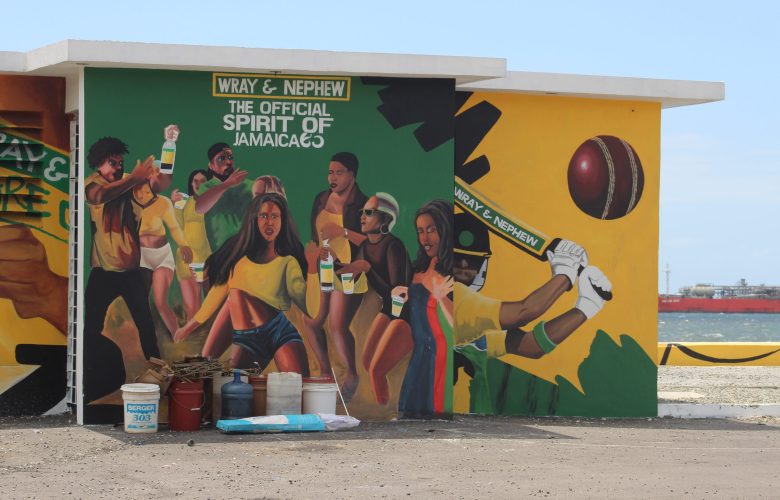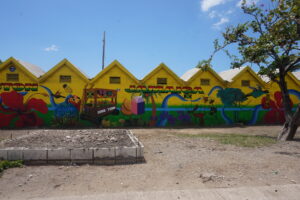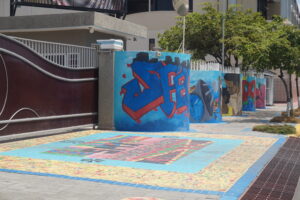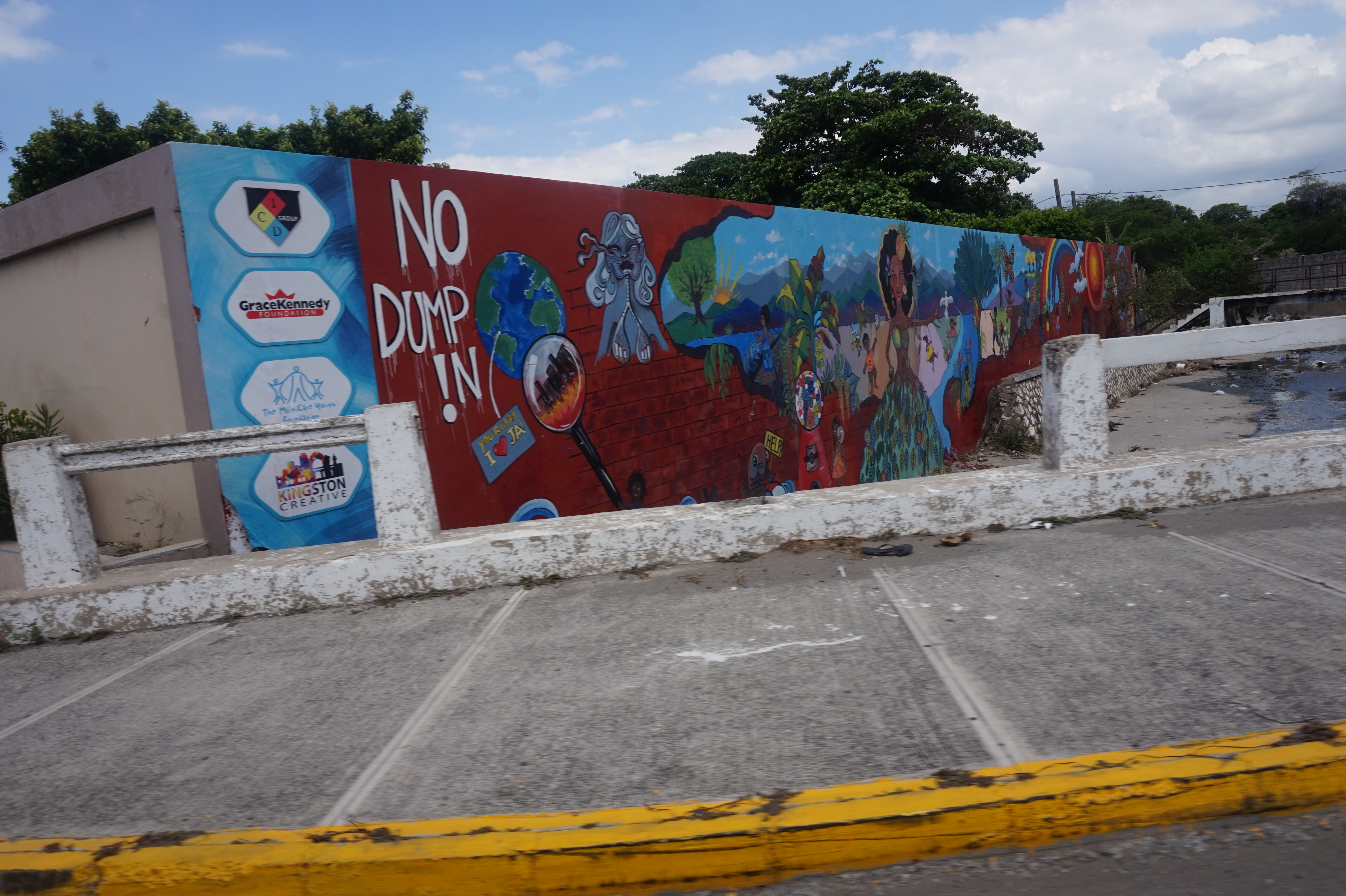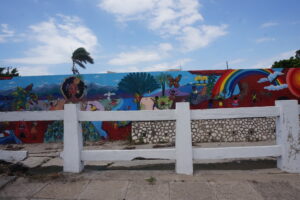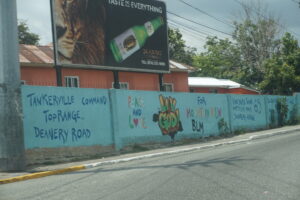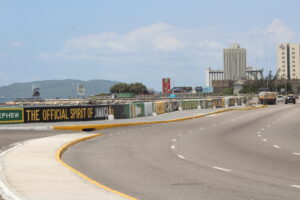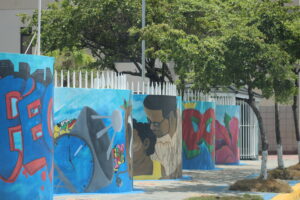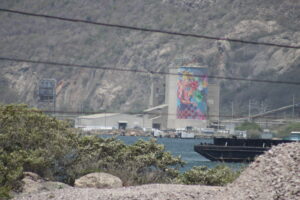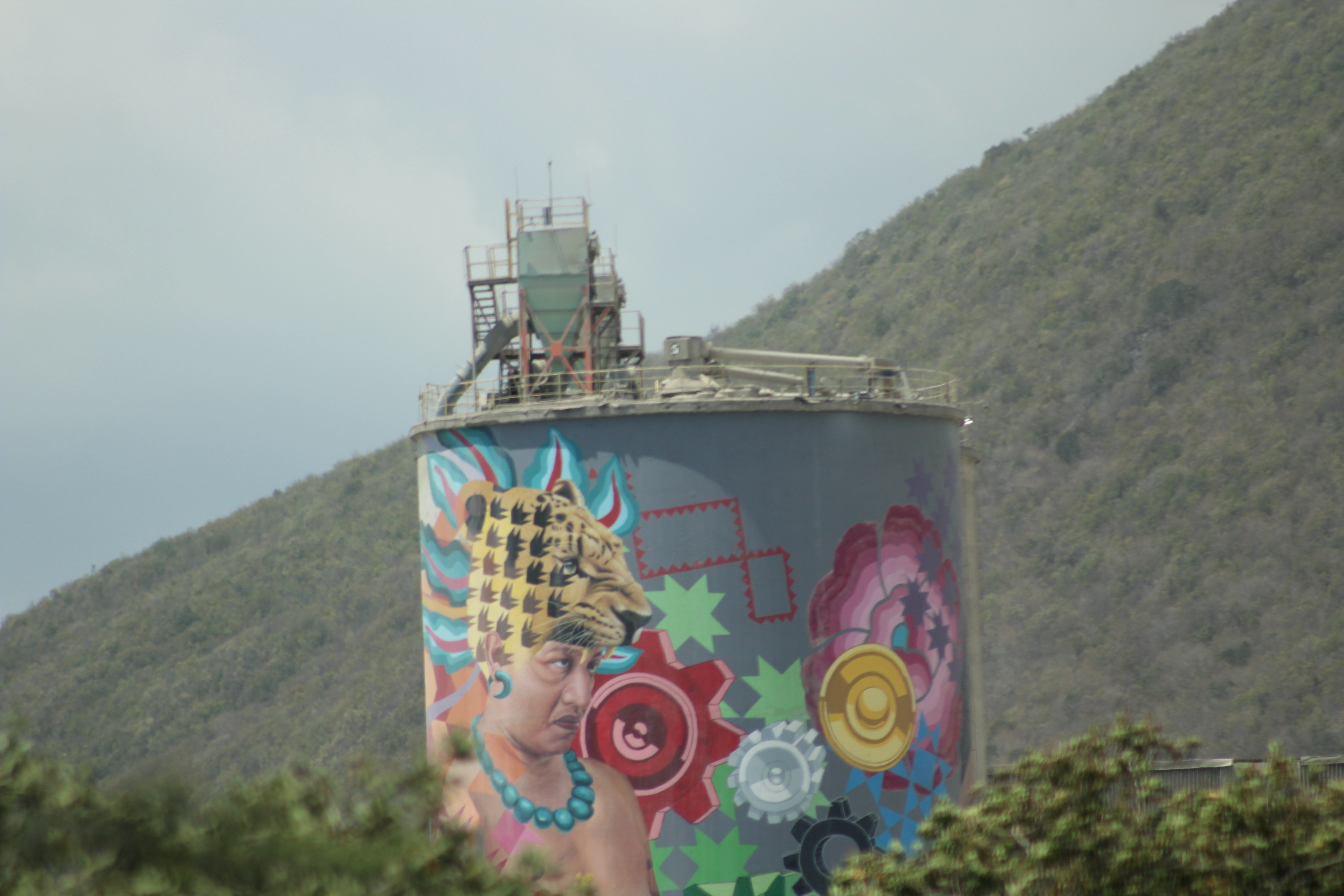Murals and graffiti are two kinds of public art that are commonly found in the Caribbean, especially Jamaica. According to the Encyclopedia Britannica a mural is “[a] painting applied to and made integral with the surface of a wall or ceiling.” Murals are a form of public art for public consumption and may vary in size and theme. In Jamaica murals are usually used to convey messages and celebrate or remember people, communities, events and culture.
The word “graffiti” comes from “graffito,” an Italian word, which means “scratch” (Britanica.com). Graffiti art is a form of visual art that involves creating images or text on public spaces such as walls, buildings, and bridges as well as in galleries and museums (Tate, 2017). Graffiti art has been a topic of debate among artists, citizens, planners, politicians and intellectuals across the world. While some argue that it is illicit art or vandalism, others view it as a form of expression intended for public viewing and interpretation (see, for example, Line Drawn between Graffiti, Murals, 2018). However, graffiti art has grown more popular in public spaces as a means of expressing cultural values, social commentary, beliefs, and identities (Line Drawn between Graffiti, Murals, 2018).
In Jamaica, three types of graffiti art may be found: tag, throw-up, and piece or “masterpiece” (see Art Crimes: The Culture and Politics of Graffiti Art, n.d.). The tag is in the simplest form, and it features the artist’s signature writing style (Art Crimes: The Culture and Politics of Graffiti Art, n.d.). Throw-up is a more sophisticated variation of tagging, where the artist may employ bubble letters or a crazy design to produce a more complex pattern. The “piece” or “masterpiece” features a famous scene or famous people with a slogan. Notably, graffiti art is significant because it is a visual expression that expresses a variety of messages and meanings (Line Drawn between Graffiti, Murals, 2018). Given its ability to beautify and boost a country’s cultural growth, it is important to support and encourage public art by providing legal spaces for artists to create their work, as well as educating the public on the importance of this art form. This will aid in the creation of lively and dynamic communities that are enriched by the presence of public art.
References
Art Crimes: The Culture and Politics of Graffiti Art. (n.d.). Sunsite.icm.edu.pl. Retrieved April 8, 2023, from http://sunsite.icm.edu.pl/graffiti/faq/werwath/werwath.html
Decker, S. H. and Curry Glen D. (2020, May 6). Grafiti. Encyclopedia Britannica. https://www.britannica.com/art/graffiti-art.
Line drawn between graffiti, murals. (2018, June 3). Jamaica-Gleaner.com. https://jamaica-gleaner.com/article/entertainment/20180603/line-drawn-between-graffitti-murals
Tate. (2017). Graffiti art | Tate. Tate. https://www.tate.org.uk/art/art-terms/g/graffiti-art
Written by Nicollet Wright
Photos by Ian Boxill
